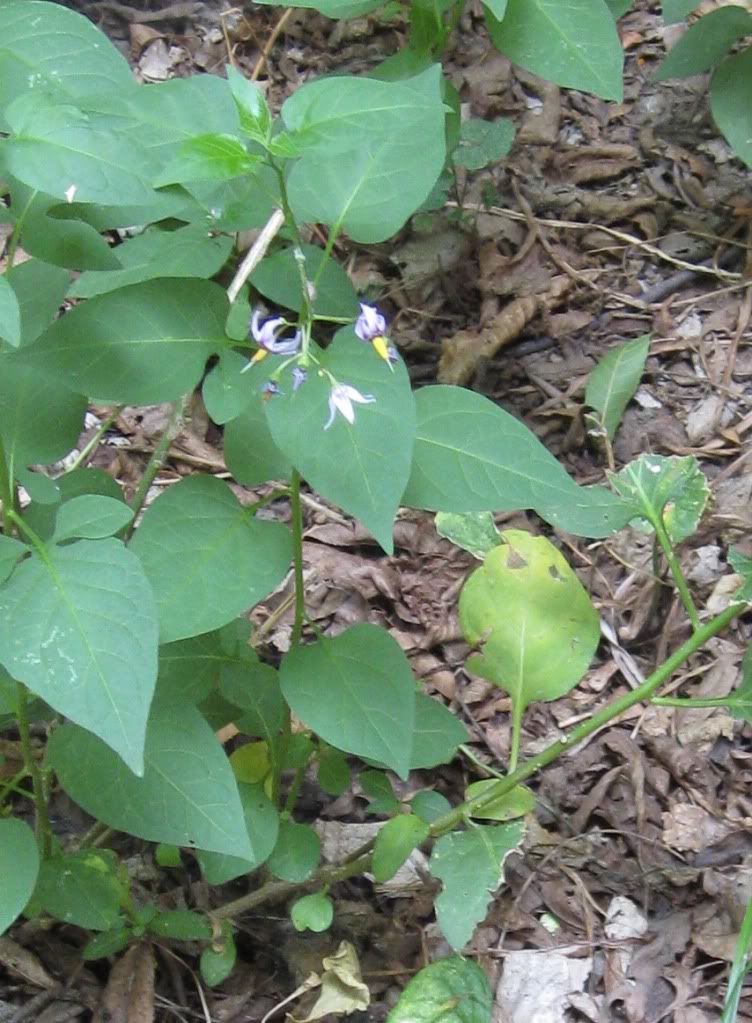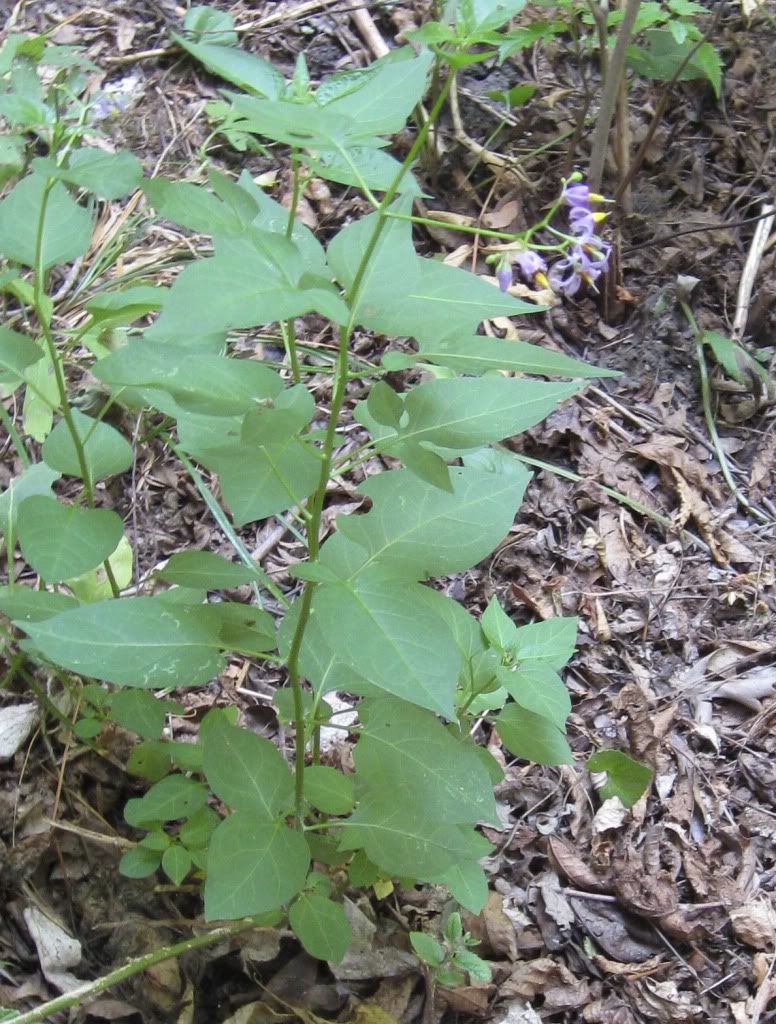It’s hard to imagine the American diet without members of the nightshade family, such as tomatoes and white potatoes. The tobacco plant, from the same family, played an important part in U.S. history too.
Growing up in Iowa, I was familiar with the term “black nightshade” from sinister-sounding voice-overs in herbicide commercials. Millions of people have heard of the poisonous nightshade berries, thanks to this summer’s animated feature Brave. But have you ever seen this wildflower in bloom? I hadn’t until recently. Follow me after the jump for a few close-up views.
This is an open thread.
According to Wildflowers of Iowa Woodlands by Sylvan Runkel and Alvin Bull, the nightshade (solanum nigrum) is commonly known as black nightshade, deadly nightshade, or poisonberry. It can be found across Iowa, “especially on moist to medium dry soils of open woodlands and woodland borders. It is common around the edge of gardens and house yards.”
Runkel and Bull describe nightshade flowers as “white, often tinged with purple.” A related nightshade species, solanum carolinense, is in the US Wildflower database of white flowers in Iowa. The nightshade flowers I’ve seen are more purple than white.
The flowers have a distinctive look, described by Runkel and Bull as follows:
Five curved petals join at their bases to form a tiny star. From their center protrudes a yellow “beak” formed by the stamens. Loose clusters of a few flowers droop on slender stalks which arise from the axils of the upper leaves.
As you’d expect for a plant called “poisonberry,” many people consider the fruit of this plant poisonous. But this point is debatable. While the leaves are certainly poisonous, the fruit may not be harmful if the berries are fully ripe and black. Eating the berries when green or partly green is not recommended. The Foragers Harvest blog discusses the history of horticultural views on black nightshade here. The author argues that the solanum nigrum has gotten a bad rap because the undeniably poisonous European plant Atropa belladonna is also commonly called black nightshade. Many gardeners use the nightshade berries to make pies or jams. I think I will stick to enjoying the flowers rather than rolling the dice on the berries.
LATE UPDATE: I highly recommend Brian Johnston’s incredible close-up and microscopic photos of bittersweet nightshade, the related species solanum dulcamara.




6 Comments
boo
After months of negotiations, the two candidates angling to represent Iowa’s 4th District in Congress have agreed to six debates – but just “in principle.”
…
And here are the events Vilsack and King are still in disagreement over:
– Sept. 8: Clay County Fair forum
(others)
The problem there is that King doesn’t want to do “forums,” he wants the format to be a debate, King spokesman Jimmy Center said today.
King is committed to attending the Clay, Webster and Franklin county events if they’re debates, Centers said.
Spencer was the one I wanted to attend, but I kind of want it to be a real debate.
albert Thu 12 Jul 12:25 AM
C'mon, this is theatre
King wants to be able to fast talk the audience rather than face hostile questions from the audience about birth control or who built the US Capitol. Why do you want a format that favors BS over the voter?
iowavoter Sat 14 Jul 9:14 AM
don't know what you're talking about
forums are usually informal, allowing the “fast talk,” which is what I’m not interested in.
I know King wants “Lincoln-Douglas,” but most of the debate options listed appear to be sponsored/hosted, which means questions that both candidates have to respond to in a limited amount of time.
albert Wed 18 Jul 2:03 PM
forum v debate
King spokesman Jimmy Centers said the congressman is fine with nine events, but they must be debates, rather than forums or other joint appearances where the two candidates would be at the same place but not directly spar on the issues with each other.
I’m going to skip stump speeches over a bale of hay.
albert Sat 28 Jul 9:47 AM
I guess it's moot
A thistle to U.S. Rep. Steve King for backing out of the first scheduled debate with challenger Christie Vilsack.
albert Sun 26 Aug 10:28 AM
Nightshade and soybeans
I remember about 18 years ago when there was so much black nightshade in the soybean fields that the combine sieves would get plugged up. My neighbor described it to me as “The combine is making jam from the nightshade berries.” One man periodically shut down his combine and crawled in the back end with a flat bar to poke through the sieves (removing the jam) so the soybean could get through again. Otherwise the plugged sieve tossed the beans out on the ground.
iowavoter Sat 14 Jul 9:19 AM